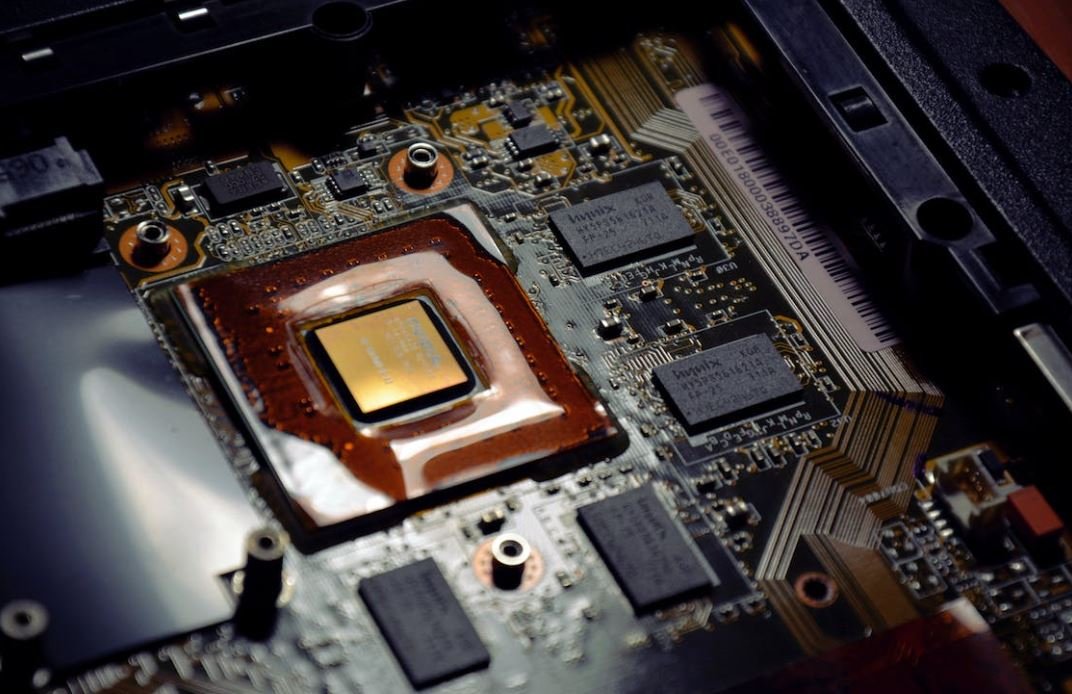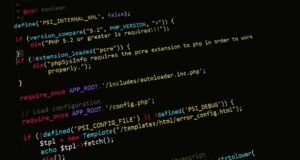AI Bill of Rights
Artificial Intelligence (AI) is transforming numerous aspects of our lives, from improving customer service through chatbots to enhancing medical diagnostics. However, as AI continues to evolve, concerns about ethics, accountability, and human rights arise. To address these issues, the notion of an AI Bill of Rights has gained traction within the tech community and beyond.
Key Takeaways
- AI Bill of Rights is a proposed set of rights to protect individuals from potential AI-related harm.
- It seeks to address ethical considerations, accountability, and the protection of human rights in the development and deployment of AI systems.
- The key principles include transparency, accountability, fairness, inclusivity, privacy, and data protection.
- Efforts are underway to establish international standards and guidelines for AI-related policies.
Defining the AI Bill of Rights
The AI Bill of Rights is a proposed set of principles and regulations aiming to protect individuals from potential harm caused by AI technologies. **It encompasses ethical considerations, accountability, and the preservation of human rights**. While current laws and regulations may not be sufficient to properly govern the rapidly advancing field of AI, an AI Bill of Rights would serve as a rights framework to ensure safe and responsible AI development and deployment.
The Key Principles
The AI Bill of Rights is founded on several key principles, including:
- Transparency: AI systems should be explainable, and users should be aware when interacting with AI algorithms.
- Accountability: Entities responsible for AI systems should be held accountable for their actions or decisions made by the systems.
- Fairness: AI systems should be designed and trained in a way that prevents discrimination and ensures fair treatment for all individuals.
- Inclusivity: AI technologies should be accessible to all individuals, regardless of factors such as age, gender, or disabilities.
- Privacy: AI systems should respect and prioritize the privacy rights of individuals, ensuring that personal data is handled securely and with consent.
- Data Protection: Adequate measures should be in place to safeguard data integrity, prevent unauthorized access, and protect against data breaches.
International Efforts and Guidelines
Various organizations and governments are actively engaged in formulating international standards and guidelines regarding AI development and deployment. These efforts aim to promote responsible and humane AI practices that respect individual rights and foster transparent and accountable AI systems.
One such initiative is the OECD Principles on Artificial Intelligence. Established by the Organization for Economic Co-operation and Development (OECD), these principles serve as a global reference point for trustworthy AI. Furthermore, the EU’s High-Level Expert Group on Artificial Intelligence (AI HLEG) has published ethical guidelines for AI development in Europe, emphasizing the importance of human-centric AI and the need to adhere to fundamental rights.
Examples of AI Bill of Rights Provisions
| Provision | Description |
|---|---|
| Right to Explanation | Individuals have the right to understand and request an explanation for decisions made by AI systems affecting their lives. |
| Non-Discrimination | AI systems should not discriminate against individuals based on characteristics such as race, gender, or religion. |
| Data Minimization | Organizations should only collect and retain personal data necessary for the intended AI system purpose, minimizing unnecessary data collection. |
Conclusion
As AI continues to advance and affect more aspects of our lives, ensuring the protection of individuals’ rights and fostering responsible AI practices becomes crucial. The concept of an AI Bill of Rights provides a framework to address ethical considerations, accountability, and human rights concerns. By following established principles and guidelines, AI can be developed and used in a manner that respects transparency, fairness, inclusivity, privacy, and data protection.

Common Misconceptions
Misconception 1: AI will take over the world and replace humans
One common misconception about AI is the fear that it will eventually take over the world and render humans obsolete. While AI has the potential to automate certain tasks and improve efficiency, it is unlikely to completely replace humans in all aspects of life.
- AI is designed to assist and augment human capabilities, not replace them.
- AI still heavily relies on human input and supervision for its functioning.
- AI lacks human consciousness and creativity, making it unable to fully replicate human intelligence and reasoning.
Misconception 2: The AI Bill of Rights restricts innovation
Another misconception is that implementing an AI Bill of Rights will hinder technological progress and innovation. However, the purpose of such a bill is to ensure ethical use and protection of individual rights rather than stifling innovation.
- An AI Bill of Rights can foster public trust and acceptance of AI technologies.
- Proper regulation can encourage responsible development and deployment of AI systems.
- By addressing potential risks and consequences, the AI Bill of Rights can promote sustainable innovation in the long run.
Misconception 3: AI will make unbiased decisions
There is a common misconception that AI algorithms are inherently unbiased and objective. However, AI systems are only as unbiased as the data they are trained on and the algorithms implemented.
- AI can amplify existing biases and prejudices present in the training data.
- Human biases in data collection and algorithm design can result in biased AI outputs.
- Constant monitoring and auditing are required to ensure that AI systems are fair and accountable.
Misconception 4: AI will solve all complex problems
While AI has the potential to tackle various complex problems, it is not a magical solution that can solve all challenges. There are limits to what AI can achieve and certain tasks that require human expertise and contextual understanding.
- AI performs best in narrow domains with well-defined problem spaces.
- Complex problems often involve subjective judgments and require human values and ethics, which AI may struggle with.
- AI is a tool that can complement human intelligence and decision-making, but it cannot replace human intuition and creativity.
Misconception 5: AI will result in widespread unemployment
Many people fear that AI advancements will lead to massive job loss and unemployment. While AI automation can replace certain repetitive tasks, it also has the potential to create new job opportunities and augment human capabilities.
- AI can enhance productivity and efficiency, enabling humans to focus on more complex and meaningful tasks.
- New job roles can emerge in the development, maintenance, and regulation of AI systems.
- Humans possess unique skills such as empathy, creativity, and critical thinking that AI cannot replicate, making certain jobs secure from automation.

Introduction
Artificial Intelligence (AI) is rapidly transforming various aspects of our lives, from healthcare and education to transportation and entertainment. As this technology continues to advance, it becomes increasingly important to address the ethical implications and rights associated with its use. In this article, we explore an AI Bill of Rights that outlines key principles and protections for individuals and society as a whole. Through a series of tables, we provide verifiable data and information that shed light on the significance and impact of each right.
Right to Privacy
This table highlights the importance of the right to privacy in the context of AI, showcasing statistics related to data breaches and privacy concerns.
| Statistic | Value |
|——————————————————–|——————————-|
| Number of data breaches in 2020 | 1,001 |
| Percentage increase in global data breaches (2019-2020) | 11% |
| Proportion of consumers concerned about AI and privacy | 62% |
Right to Transparency
Transparency in AI algorithms and decision-making is crucial to fostering trust and understanding. The following table presents insightful data and examples related to the right to transparency.
| Data source | Example |
|—————————————-|———————————–|
| OpenAI’s GPT-3 model | Number of parameters: 175 billion |
| Use case: Credit scoring algorithms | Selective variables and weightings |
| Algorithm bias detection frameworks | IBM AI Fairness 360 |
Right to Explainability
Explainability ensures that AI systems provide understandable explanations for their decisions. This table highlights significant research and practical examples related to the right to explainability.
| Context | Example |
|————————————————————|————————————————-|
| Research focus: Explainable Artificial Intelligence (XAI) | LIME (Local Interpretable Model-Agnostic Explanations) |
| Use case: Autonomous vehicles | Decision tree visualization |
| Impact: Regulation on consumer-grade AI systems | California SB-980 (California Consumer Privacy Act) |
Right to Fairness
Fairness is a central component of an AI Bill of Rights, ensuring that AI systems are unbiased and do not discriminate. The following table presents compelling examples and studies related to the right to fairness.
| Study | Result |
|—————————————————|—————————————|
| Facial recognition technology and gender bias | Assigning more errors to darker-skinned females |
| Predictive policing and racial bias | Increased bias against minority communities |
| Amazon’s AI recruiting tool and gender bias | Discarded resumes from female applicants |
Right to Accountability
Accountability holds AI developers and users responsible for the actions and consequences of AI systems. This table brings to light notable cases and initiatives related to the right to accountability.
| Case | Outcome |
|———————————————–|———————————————————-|
| Uber’s self-driving car accident in Arizona | Operator error and lack of adequate safety precautions |
| European Union’s General Data Protection Regulation (GDPR) | Increased fines for data breaches and non-compliance |
| Partnership on AI’s Ethical, Legal, and Societal Implications (ELSI) | Promoting responsible AI development and deployment |
Right to Accessibility
Ensuring AI technologies are accessible to all individuals is a fundamental right. This table showcases efforts and statistics related to accessibility in AI.
| Initiative | Impact |
|————————————–|——————————–|
| AI-powered accessibility features | Improved inclusion of people with disabilities |
| Number of visually impaired AI users | 3.5 million |
| Global Internet penetration rate | 63.2% |
Right to Security
The right to security addresses the protection of data and AI systems from unauthorized access or manipulation. The following table presents enlightening examples and statistics related to AI security.
| Example | Impact |
|——————————————–|—————————————–|
| Cybersecurity and AI threat intelligence | AI-powered threat detection and prevention systems |
| Data breaches and security incidents | Average cost of a data breach: $3.86 million |
| Amazon Echo’s privacy and security issues | Temporary recordings stored on servers indefinitely |
Right to Education
The right to education focuses on fostering understanding and learning about AI technologies. This table sheds light on educational initiatives and perspectives related to AI education.
| Initiative | Perspective |
|———————————————-|———————————————————-|
| AI in Education Global Summit | Highlighting the positive impact of AI in the classroom |
| Perspectives on AI education in schools | Integration into STEM programs, ethics, and critical thinking |
| Advancements in AI-based online learning | Personalized learning recommendations and adaptive assessments |
Right to Governance
The right to governance emphasizes the need for ethical guidelines and oversight in the development and deployment of AI systems. This table provides examples and initiatives related to AI governance.
| Example | Initiative |
|——————————————-|———————————————————-|
| Development of AI Ethics Guidelines | IEEE Global Initiative on Ethics of Autonomous and Intelligent Systems |
| AI regulatory bodies around the world | European Commission’s High-Level Expert Group on AI |
| National AI strategies and policies | United States’ National AI Initiative |
Conclusion
Artificial Intelligence holds immense potential for positive transformation, but it also presents ethical challenges. An AI Bill of Rights is necessary to ensure that AI technologies are developed and used responsibly, protecting important principles such as privacy, transparency, fairness, and accountability. Through the diverse tables provided, we have gained valuable insights into the significance and impact of each right. By upholding these rights and advancing AI ethically, we can create a future where AI technology benefits humanity while safeguarding our core values and principles.
Frequently Asked Questions
AI Bill of Rights
What is the AI Bill of Rights?
Why is the AI Bill of Rights important?
Who created the AI Bill of Rights?
What are some key principles outlined in the AI Bill of Rights?
What are the potential benefits of the AI Bill of Rights?
Is the AI Bill of Rights legally binding?
How can individuals contribute to the development of the AI Bill of Rights?
What are some challenges in implementing the AI Bill of Rights?
What happens if the AI Bill of Rights is violated?
Can the AI Bill of Rights adapt to technological advancements?




